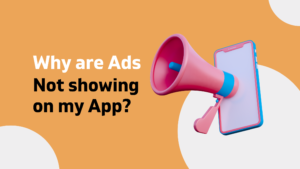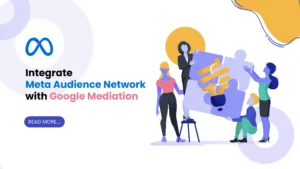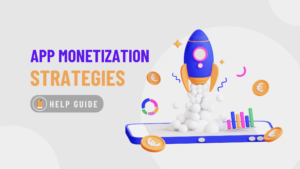Challenges in App Monetization and How to Solve Them

Many developers find app monetization to be arduous as they navigate an increasingly complicated ad monetization ecosystem and contemplate adopting approaches and technologies that meet their revenue KPIs. At AdPumb, we started researching further to figure out how publishers became trapped between a rock and a hard place. This is what we discovered.
Advertisers also face app monetization challenges finding the right advertising partners and avoiding ad fatigue among users. Furthermore, app stores are saturated, making it difficult for new apps to stand out and generate revenue. As a result, app developers and marketers must find innovative and effective ways to monetize their apps while also maintaining a positive user experience.
Here are some app monetization challenges faced by the publishers:
1. Users not Spending Enough Time
Whether your app’s users spend only a brief amount of time on it (for example, if it’s a tool, productivity aid, or routine service), you may attempt the following solution:
Solution: Consider showing advertisements in areas where a user could halt. You may also create additional features to increase user retention and session length. If your app is a game, a content-heavy app, a video/music app, or anything similar, study your users’ in-app activity to determine if the time can get maximized. Find methods to reward additional time spent in the app, for example, by providing a wider range of material or by adding game levels.
2. Bad Ads
The Ad-supported approach is not a magic pill that assures your app’s revenue. App developers frequently do not care for the quality of their Ad slots or creatives, which is a catastrophic error; unpleasant and improper advertisements will swiftly erode your consumer base. Repetitive and irrelevant advertising are the primary causes of app turnover. App developers should nurture their customers by monitoring the kind of advertising they see, filtering out non-brand-safe themes and content categories, and so on.
Solution: Firstly, one should investigate the industry’s top mobile Ad techniques. Banners should not obscure interface elements and, if feasible, should be native. Video Ads should only get used during natural breaks in the content experience (like the next level or death in the game). Unskippable commercials irritate people the most; ideally, Ads should provide compensation for watching them, such as rewarded video Ads.
3. Scarcity of Demand
Most developers don’t think about app monetization for enough. They often choose one monetization partner, like AdMob, and stick with it. Developers that choose only one monetization partner are reliant on a small number of demand sources, which might limit their ability to reach demand on a larger scale. Although AdMob can give fill rates, it cannot guarantee the greatest CTRs. Some SDKs can deliver better rates for gaming applications, while others can provide much higher CTRs for specific geo audiences.
Solution: App developers should not become fixated on a single SDK. Instead, they should try mediation, add new SDKs, and obtain more diversified demand sources. Furthermore, developers must thoroughly understand their target audience, segment it, and investigate the market for SDKs that value specific segments higher. AdPumb ad mediation lets you access global demand, ensuring 99.99% fill rates and the best prices per impression.
4. Ads Interfering with Content
The ad-supported model is the most prevalent way for applications to get monetized. Although ads are a dependable way for applications to make money, they can impact your user experience. Ads that get awkwardly placed annoy and dissuade people from using your app, raising your churn rate.
Even if advertising gets tastefully placed, app users may find them annoying if the information is repeated or unrelated to them.
Solution: If advertising is the primary source of revenue for your mobile app, you must ensure that they are relevant to your target demographic, which implies that native and tailored ads are your best bets. Mobile games, for example, should include rewarded video ads that offer users a bonus for viewing the whole video.
5. Bogus SDKs
SDKs (software development kits) are bits of code that allow mobile apps to connect to third-party services like ad networks. The issue is that some such SDKs engage in ad fraud, which is the practice of falsifying ad impressions, clicks, and conversions to generate income. Such fake SDKs steal your ad income and harm your mobile app and business’s reputation.
Solution: Conduct a comprehensive background investigation on the SDK with whom you intend to collaborate. Partnerships with trustworthy traffic quality vendors are one sign of a solid app monetization platform.
Bottom line
Mobile apps can be profitable, but only if you have a strong monetization plan to overcome the app monetization challenges. In general, the optimum one must comprise a variety of monetization strategies. You may, for example, broadcast advertising while still allowing customers to pay for an ad-free experience. In this manner, you may make revenue from many sources while still catering to your consumers’ tastes.




![AdMob Rewarded Video Ads [Ultimate Guide]](https://adpumb.com/wp-content/uploads/google-admob-rewarded-video-ads-300x150.png)
